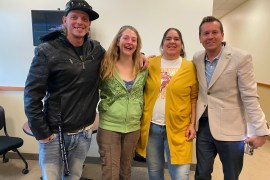KHN and InvestigateTV analyzed the driving times to stroke-certified hospitals in the Mississippi Delta and Appalachia to determine how many people in those regions live far from stroke care.
The regions of Appalachia and the Delta are taken from the Appalachian Regional Commission and the Delta Regional Authority, respectively.
County-level stroke death rates are for adults 35 and older and come from the Centers for Disease Control and Prevention’s Interactive Atlas of Heart Disease and Stroke. The most recent data is from 2016-18.
Hospitals are considered stroke centers if they are certified for their stroke care by the Joint Commission, HFAP or DNV, and listed on their websites as of March 2021.
Though some states also run their own stroke certifications, this project focused on these three national certifying bodies, as is typical in national-level stroke research and analysis.
There are four levels of stroke certification. We classified acute stroke-ready and primary stroke centers as “basic-care stroke centers” and thrombectomy-capable and comprehensive stroke centers as “advanced-care stroke centers”.
A small number of hospitals were certified by two of the three bodies. In those cases, we used the Joint Commission stroke certification because it has the most rigorous review process and the largest number of hospitals certified.
We matched those lists to a dataset from the Department of Homeland Security that contains location and obtained a 45-minute drive time radius from each stroke center using the HERE Technologies API.
To calculate how many people lived within 45 minutes of a stroke center and how many lived farther away, we obtained a national Census block group shapefile from IPUMS NHGIS and clipped water features using the USGS National Hydrography Dataset. We then calculated the percentage of each block group that overlapped with the stroke center radii two ways: overlapping with any stroke center or overlapping with advanced stroke centers. We multiplied this overlap percentage by population data from the 2019 American Community Survey for each block group, and summed by state and separately by region.
To download the data and read the analysis code, visit our Github repository.






